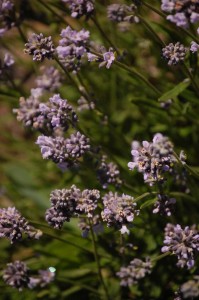Herbal vinegars are a great way to bridge that oh-so-fine-line between food and medicine. They can also be a nice way to introduce herbs to the uninitiated and those with sensitive palates. Once made, they are quick and easy to use, good for those busy people in your life who can’t take the time to make some tea. Last, but certainly not least, they are delicious.
Herbal vinegars can be sprinkled over your food or used as a base for making your own salad dressing. Some herbs actually work better as tea or vinegar than tincture because they need either the long cooking and/or the acidity of the vinegar to pull out their minerals and make them more bio-available.
The other good news is that making an herbal vinegar is quite simple. Here’s how you do it:
- Start with a clean, glass jar with a plastic lid. If you don’t have a plastic lid, cut a square out of plastic bag or use some plastic wrap to cover the jar before putting on the metal lid. Vinegar will eat through metal over time. If that happens you have corroded metal in your vinegar; besides not tasting very good it is not good for you!
- Choose an organic vinegar that is on the light side; such as apple cider vinegar or rice wine vinegar. A vinegar such as balsamic will mask the flavor of the herbs you infuse in it.
- Fill your jar with herbs, fresh or dry, and gently pack them in if they are fluffy.
- Pour in the vinegar covering the herbs ½ to 1” above the line of the herbs. If the herbs are not staying under the surface of the vinegar you can put some rocks (clean and non-porous) in the jar to hold the herbs down. The herbs will oxidize, turn black and eventually mold if they are exposed to air.
- Keep your herbal vinegar in a cool, dark place – like a cabinet – for 2-4 weeks.
- Strain out the plant matter and you have a vinegar.
additional tips
If the vinegar is cloudy you have probably used an herb that contains starches, which is fine, just keep it in the refrigerator since the starches will cause it to spoil more quickly. Most herbal vinegars, if stored properly, can last up to a year and are a great way to take your herbs.
You can get creative and play with the colors as well. I learned from Karyn Sanders to put fresh chive blossoms in rice wine vinegar and it will turn a lovely shade of lavender. Also consider the color in such plants as lavender and red basil.
Speaking of basil, when it really takes off in your garden, you can have more than you know what to do with. Consider making an herbal vinegar. It is a great way to keep large quantities of fresh herb from going bad.
So, as Julia Child would say “Bon Appetit!”
Be well.
Sarah
